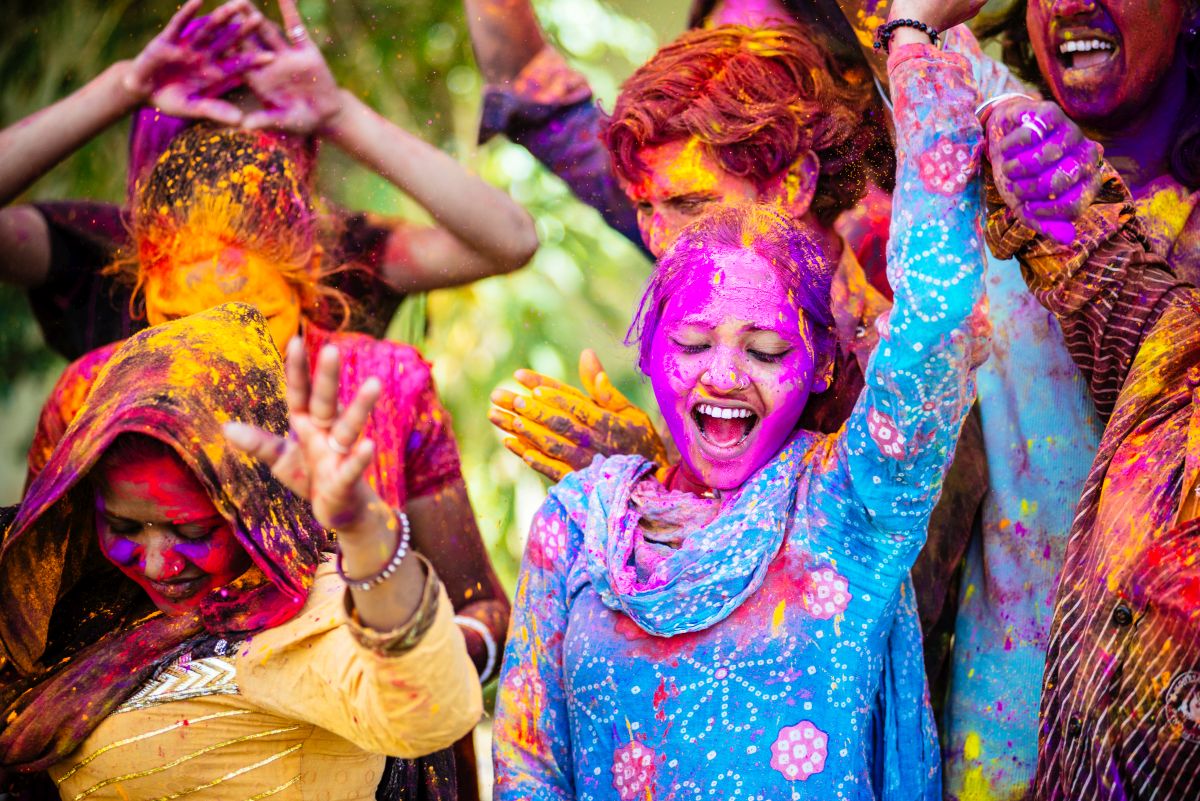This season of spring is a transitional season as winters are bidding goodbye and summer is ready to say hello. The spring season during which the weather changes, is believed to cause viral fever and seasonal cold. The playful throwing of natural coloured powders, called gulal has a medicinal significance. When the colours are made traditionally of Neem, Kumkum, Haldi, Bilva and other medicinal herbs, they add glow to skin and hair but also have various health benefits.
Many colours are obtained by mixing primary colours. Artisans produce and sell many of the colours from natural sources in dry powder form, in weeks and months before Holi.
Some of the traditional natural plant-based sources of colours are:
 Orange and red
Orange and red
The flowers of Palash or tesu tree, also called the flame of the forest, are source of bright red and deep orange colours. Powdered fragrant red sandalwood, dried hibiscus flowers, radish and pomegranate are alternate sources and shades of red. Mixing lime with turmeric powder creates an alternate source of orange powder, as does boiling saffron (kesar) in water. Palash has antiseptic and anti inflammatory properties.
Green
Mehendi and dried leaves of Gulmohar tree offer a source of green colour. In some areas, the leaves of spring crops and herbs have been used as a source of green pigment. The benefits of Henna are like it relieve headaches, detoxify the body, improve nails, protect the skin, boost hair health, cool the body, reduce inflammation, and speed healing.
[earth_inspire]
Yellow
Haldi (turmeric) powder is the typical source of yellow colour. Sometimes this is mixed with chickpea (gram) or other flour to get the right shade. Bael fruit, Amaltas, species of Chrysanthemums and species of Marigold (genda) are alternate sources of yellow colour. Haldi has anti inflammatory property, natural antiseptic, reduces the dark spots on skin and protect against sun damage.
Blue
 Indigo plant, Indian berries, species of grapes, blue Hibiscus, and Jacaranda flowers are traditional sources of blue colour for Holi. These are skin friendly and non allergic.
Indigo plant, Indian berries, species of grapes, blue Hibiscus, and Jacaranda flowers are traditional sources of blue colour for Holi. These are skin friendly and non allergic.
Magenta and purple
Beetroot (chukandar) is the traditional source of magenta and purple colour. These are directly boiled in water to prepare coloured water.
Brown
Dried tea leaves are source of brown coloured water. Certain clays are alternate source of brown.
Black
Species of grapes, fruits of Amla (gooseberry) and vegetable carbon (charcoal) give black colours.
Good Natural Colours V/S Bad Synthetic Colours:
 Natural colours are soft, lustrous and soothing to the human eye. They are non allergic and non toxic. And above all natural colours do not harm the environment as natural colours are eco friendly. On the other hand synthetic colours are made from mixing various chemicals that are harsh on our skin and hair. Synthetic colours also cause skin allergies and other skin and hair problems. Some people are also allergic to synthetic colours as they trigger asthma or respiratory problems.
Natural colours are soft, lustrous and soothing to the human eye. They are non allergic and non toxic. And above all natural colours do not harm the environment as natural colours are eco friendly. On the other hand synthetic colours are made from mixing various chemicals that are harsh on our skin and hair. Synthetic colours also cause skin allergies and other skin and hair problems. Some people are also allergic to synthetic colours as they trigger asthma or respiratory problems.
If you love your body and skin add only natural colours in Holi 2020 celebrations. Enjoy the festival and be safe.
For Any Info- info@religionworld.in









